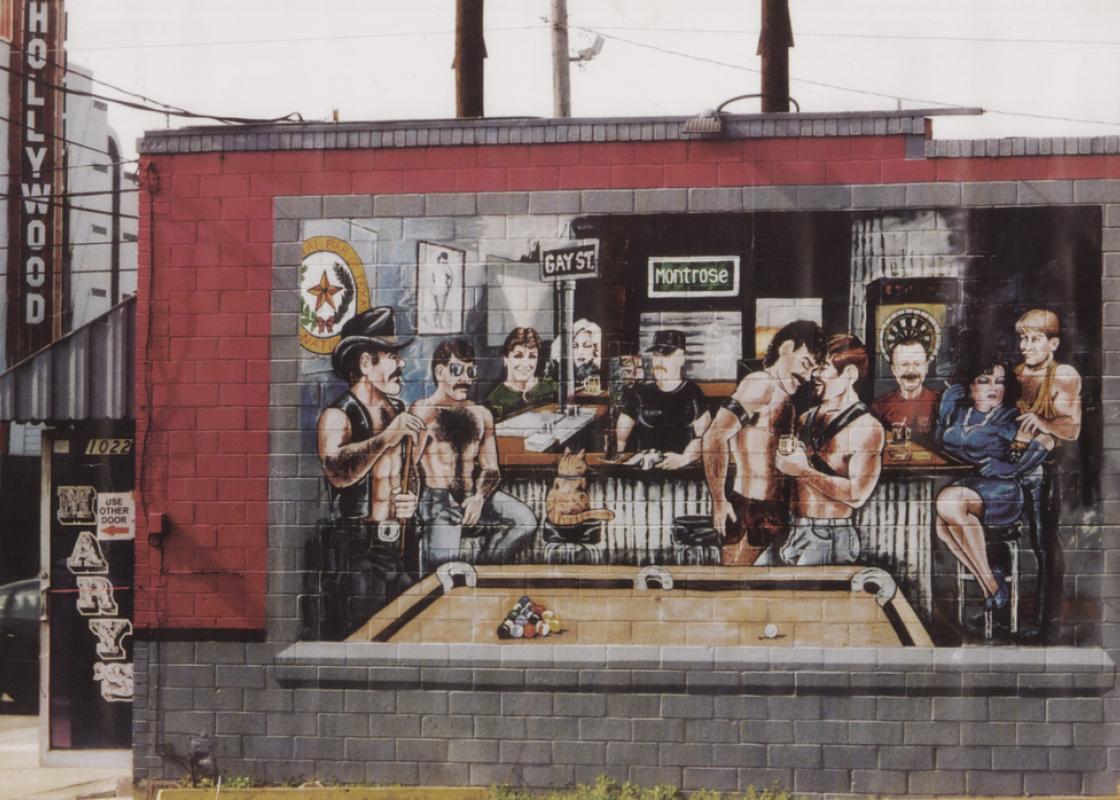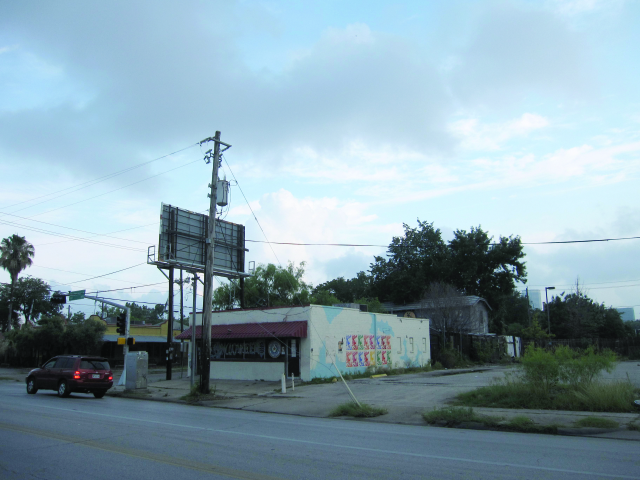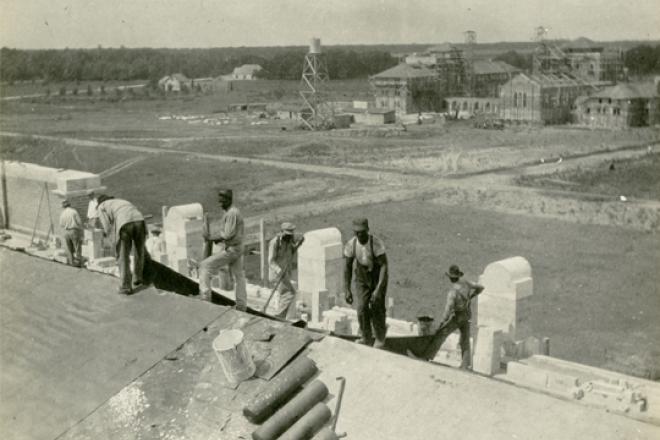In advance of Cigna Sunday Streets this weekend along Westheimer, OffCite is republishing a piece from the counterculture special issue of Cite (82, Summer 2010) with a postscript by its author Brian Riedel. The building that housed Mary's is now home to the Blacksmith coffee shop.
Mary’s is closed for good. Now only “Keep Out” signs and realtor placards jostle for attention at this former hub of Houston’s gay bar scene. Its passing, however, did not go unmarked. Shortly after the bar was locked down in late October 2009, local activists put up a Facebook page, “Mary’s Naturally Closed,” to organize a historical salvage effort. Richard Connelly of the Houston Press picked up the story. After Hours on KPFT featured an interview with members of the family that owns the land at 1022 Westheimer. Even Fox 26 News ran a segment spotlighting the closure, timed to air on the eve of World AIDS Day.
Just looking at the property, you might sympathize with the newcomer to Houston who is hard pressed to understand all the fuss about a cinderblock building tacked to the front of a two-story, wood-slat house that peers out above a sun-faded fence enclosing what might be taken for an unkempt backyard. Talk to those who knew Mary’s, though, or take a look at the famous photograph-plastered bar tops, and you begin to get a sense of what the place meant—and still means.
Many Houstonians, even those who never went inside the bar, remember the mural by the parking lot. For much of the 1990s and into the last decade, it was a window into the kind of social space Mary’s strove to be: a scene where drag queens raise a glass with the leather–Levi set, where enjoying the sensuality of it all is maybe even more important than starting that pool game, and where the much loved bar cat Mr. Balls has a stool all to himself. In 2006, however, passersby and denizens alike were surprised to find the mural painted over with fluffy cartoon clouds, leaving Mr. Balls perched alone
in a heaven so un-Texan it offered but a single bottle of beer.
While various stories circulated about the new façade—some say the gentrification of the neighborhood created pressure on the bar to “clean up,” à la Giuliani in Times Square, while others say the bar was planning to create a new mural with input from its patrons—the change seemed only to continue the trend that began with the late 1980s crackdown on the sexually oriented businesses that once lined lower Westheimer and the ’90s taming of the Westheimer Street Festival. So when Mary’s seemed about to close for good in 2002, Cathy Matusow of the Houston Press captured the bohemian nostalgia at the forefront of Houston’s collective memory, writing about the deliciously seedy, raucous bar where motorcycle clubs convened, dancers swung from a trapeze bar, and patrons’ underwear hung from the ceiling.
Yet Mary’s was more than Houston’s homage to laissez les bon temps rouler. It was also where the gay community got organized in the 1970s and ’80s. Cliff Owens, a regular since 1976 and co-owner of the business from 1991 to 2002, recalls that the two-story house behind the main bar was the first meeting place for the Gay Political Caucus, now the venerable Houston GLBT Political Caucus. Mary’s also provided space for a host of motorcycle, leather, and social clubs. Andy Mills, manager of the bar from 1976 to 1986 and Pride Parade Grand Marshal with Marion Coleman in 1982, credits Mary’s with providing over $80,000 in 1978 to start the Montrose Symphonic Band, the precursor to today’s Houston Pride Band.
Beyond fostering social and political activism, though, Mary’s is most often remembered for the central role it played as HIV tore through Houston’s gay community. Ray Hill recounts that Mary’s was where the first plans were hatched for the Kaposi’s Sarcoma Foundation, which would later become the AIDS Foundation Houston. As the crisis unfolded, the bar also became a community memorial where Houstonians mourned and celebrated the lives of those lost to the virus. The fenced-in yard at the back of the property, affectionately called the “Outback,” contains the buried or scattered ashes of many patrons and employees of the bar, as well as trees and shrubs planted in memory of others. Among the more than 200 Houstonians memorialized there is Jim “Fannie” Farmer, who bought the bar in 1972 and whose ashes were buried there in June 1991.
Though the countercultural space that was Mary’s has faded, the institutions it spawned have endured to make Houston a vibrant city. So if you happen to go by 1022 Westheimer, take a cue from the tradition of the Pride Parade and bow before Mary’s. The old queen deserves it.
When this short piece originally appeared, the Pride Parade seemed fixed in space to the curves of Westheimer where it gained a place in Houstonians' imagination of their city. Beginning this year, however, Pride will take place downtown, along a different but significantly historic route, near the Hyatt Regency hotel where protests against Anita Bryant's June 16, 1977 appearance at the Texas Bar Association launched a new phase of gay and lesbian political organizing in Houston. Whether you see the new location as a sign of progress or abandoning history, keep your eye on Montrose. The neighborhood's queer story isn't over yet.











